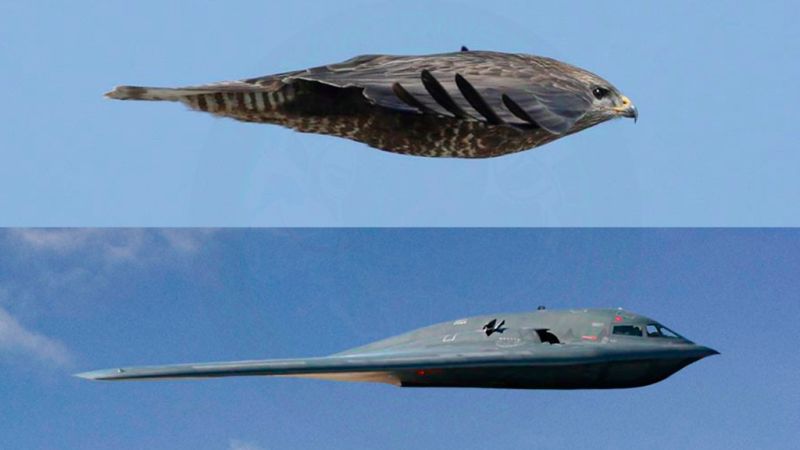Biomimicry: A Blueprint for Sustainable Organizational Development
Learn from nature's designs and processes to enhance efficiency, resilience, and sustainability.
TOOLSCROSSART
6/18/20254 min read


In an increasingly complex and interconnected world, organizations are constantly seeking innovative approaches to enhance resilience, foster efficiency, and drive sustainable growth. One powerful, yet often overlooked, paradigm is biomimicry—the conscious emulation of nature's genius. Far from a quaint curiosity, biomimicry offers a robust framework for organizational development, providing time-tested strategies for problem-solving, design, and systemic evolution.
A Historical Perspective on Nature's Inspiration
While the term "biomimicry" was popularized by Janine Benyus in her seminal 1997 book, Biomimicry: Innovation Inspired by Nature, the practice of looking to nature for solutions is as old as humanity itself. Early humans observed animal behaviors for hunting strategies or plant structures for shelter. Leonardo da Vinci, in the 15th century, meticulously studied bird flight to conceptualize his flying machines, laying foundational ideas for aeronautics. His notebooks are filled with observations of natural forms and mechanisms, reflecting an innate biomimetic curiosity.
The industrial revolution, however, saw a divergence, with human innovation often prioritizing speed and scale over harmony with natural systems. It is only in recent decades, as we confront the pressing challenges of climate change, resource depletion, and systemic inefficiency, that a formalized return to nature's wisdom has gained significant traction. Biomimicry, as a structured discipline, emerged as a response to this need, advocating for designs and processes that are not merely "eco-friendly," but genuinely "life-friendly."
Nature's Master Class in Efficiency and Collaboration
At its core, biomimicry is about learning from the 3.8 billion years of research and development that have shaped life on Earth. Nature operates with unparalleled efficiency, adaptability, and resourcefulness. Every organism, ecosystem, and biological process represents a successful solution to a set of environmental challenges. By observing and abstracting these strategies, organizations can unlock novel solutions to their own intricate problems.
Consider, for instance, the implications for operational efficiency. The remarkable strength and lightweight properties of a spider's silk, a material stronger than steel by weight, inspire new approaches to material science and manufacturing, leading to more sustainable and less resource-intensive production methods. This isn't just theoretical; researchers are actively developing synthetic spider silk for applications ranging from lightweight body armor to biomedical sutures. In an organizational context, this translates to optimizing resource allocation, streamlining workflows, and minimizing waste through elegant, nature-inspired design.
Another compelling example lies in the realm of distributed intelligence and decentralized networks. Ant colonies, with their seemingly simple individual components, exhibit incredible collective intelligence, self-organizing to find food, build complex nests, and adapt to changing conditions without a central leader. This offers profound insights for organizational structures, suggesting models where information flows more freely, decision-making is distributed, and teams can autonomously adapt to emerging challenges, fostering greater agility and responsiveness. The algorithms used in logistics and network optimization, for example, often draw inspiration from the foraging patterns of ants.
Furthermore, nature's approach to collaboration and symbiosis provides a powerful metaphor for inter-organizational relationships and internal team dynamics. Mycorrhizal fungi form symbiotic relationships with plant roots, exchanging nutrients for carbohydrates, benefiting both parties. This principle of mutualism can be applied to foster more effective partnerships, encourage cross-functional collaboration within an organization, and build resilient supply chains based on shared value creation rather than purely transactional exchanges.
Inventions and Ideas Inspired by Nature
Beyond the broader concepts, biomimicry has directly led to a myriad of concrete inventions and innovative ideas:
Velcro: Perhaps one of the most famous examples, Velcro was invented by George de Mestral in 1941 after he noticed how burrs clung to his dog's fur. Under a microscope, he observed the tiny hooks on the burrs and the loops on the fur, leading to the design of the ubiquitous fastener.
Shinkansen Bullet Train: The kingfisher's beak, perfectly designed for aerodynamic entry into water with minimal splash, inspired the unique nose cone of the Japanese bullet train. This biomimetic design significantly reduced noise pollution and air resistance when the train entered tunnels.
Self-Cleaning Surfaces (Lotus Effect): The lotus leaf's remarkable ability to remain clean, even in muddy environments, is due to its superhydrophobic surface texture. This has inspired the development of self-cleaning paints, glass, and fabrics, reducing the need for harsh chemical cleaners.
More Efficient Wind Turbines: The bumps on the flippers of humpback whales, known as tubercles, enhance lift and reduce drag. This biological insight has been applied to the design of wind turbine blades, leading to more efficient energy capture.
Eastgate Centre, Harare, Zimbabwe: This pioneering building uses a passive cooling system inspired by the self-cooling mounds of African termites. The building maintains a comfortable internal temperature with minimal reliance on conventional air conditioning, drastically reducing energy consumption.
Biomimicry's Impact on Organizational Development
The implications for organizational development are significant. Embracing biomimicry encourages a shift in mindset, moving away from linear, extractive models towards cyclical, regenerative ones. It prompts organizations to:
Rethink Design: Apply nature's principles of efficiency, elegance, and multi-functionality to product and service design, process optimization, and even office layouts.
Enhance Resilience: Build systems that are adaptable and antifragile, capable of thriving amidst disruption, much like ecosystems recover from disturbance.
Optimize Resource Use: Learn from nature's closed-loop systems, where waste from one process becomes a valuable input for another, leading to circular economies within the organization.
Foster Innovation: Utilize biomimicry as a systematic innovation tool, inspiring breakthroughs by observing biological models.
Cultivate a Sustainable Culture: Embed a deep appreciation for ecological principles and long-term thinking into the organizational DNA, aligning business goals with environmental stewardship.
In essence, biomimicry offers more than just a set of tools; it provides a philosophy for enduring success. By looking to life for guidance, organizations can develop more intelligent, resilient, and inherently sustainable pathways for their own evolution, ultimately contributing to a healthier planet and a more prosperous future.
"Ants are dumb, ant colonies are smart."
— Attributed to the study of swarm intelligence